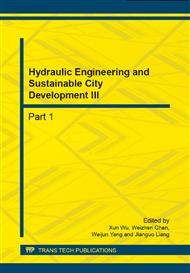p.1037
p.1040
p.1046
p.1053
p.1058
p.1062
p.1066
p.1070
p.1074
A Study on Development Policy of Low-Carbon City
Abstract:
In recent years, with the global climate issue and the contradiction between energy environment and economic development becoming increasingly prominent, Shenzhen International Low-carbon City, as the flagship project of China-EU Strategic Cooperation on Sustainable Urbanization, aims at exploring new ways to realize low-carbon development models, while low-carbon development policy is one of the key factors. This paper firstly introduces the background of the Shenzhen International Low-carbon City Project, then summarizes advanced experience and gives experience reference in low-carbon development policy of the developed regions worldwide, and finally puts forward relevant countermeasures and suggestions.
Info:
Periodical:
Pages:
1058-1061
Citation:
Online since:
September 2014
Price:
Сopyright:
© 2014 Trans Tech Publications Ltd. All Rights Reserved
Share:
Citation:


